We look at the RIPE NCC in terms of growth, geographic distribution and IPv6 deployment. We find that recent RIPE policy changes have had an impact on membership statistics and development trends.
Introduction
At the start of 2015, we looked at various statistics and developments in the RIPE NCC membership. We found new LIRs were signing up with the RIPE NCC in ever increasing numbers. We also found LIRs that received an IPv6 allocation under the policy for the last IPv4 /8 tended to score less with IPv6 RIPEness than other LIRs holding IPv6 at equivalent points in history. With nine months passed, it is time to revisit these statistics. Has anything changed? Do we see new trends and developments?
Overall age distribution
Figure 1 shows the age distribution of the RIPE NCC membership, based on the date the member joined the RIPE NCC. Each vertical bar represents one quarter. We can see that growth in the first nine months of 2015 has been quite strong. In each of the three quarters from January 2015 to October 2015, well over 500 LIRs signed a service agreement with the RIPE NCC. The total for these three quarters is 1,746 new LIRs, 117 more than we welcomed in all of 2014. However, we can also see that, as indicated by the red bars, 10 percent of the LIRs that signed in 2015 had already closed by 1 October. This is double the amount of 1 January 2015, when 5% of the new LIRs that signed in 2014 had closed.

Another observation made from Figure 1 is that, for the first time since April 2014, the number of new LIRs in the most recent quarter is lower than the number of LIRs that signed the quarter before. The difference is not large, only 11 LIRs fewer in the third quarter compared to the second quarter of 2015, but it does break a 1.5 year sequence of ever-increasing numbers of new LIRs. Whether or not this is the start of a trend is not known yet. The longer-term trend could still be accelerated growth with the third quarter of 2015 being an exception, a temporary pause.
Age distribution in sub-regions
Looking at the age distribution in the regions, we see that the reduced growth took place mostly in Eastern Europe and the Russian Federation. Western Europe and the Middle East continued to see record numbers of new LIRs signing for RIPE NCC services in one quarter. Figure 2 below illustrates this.
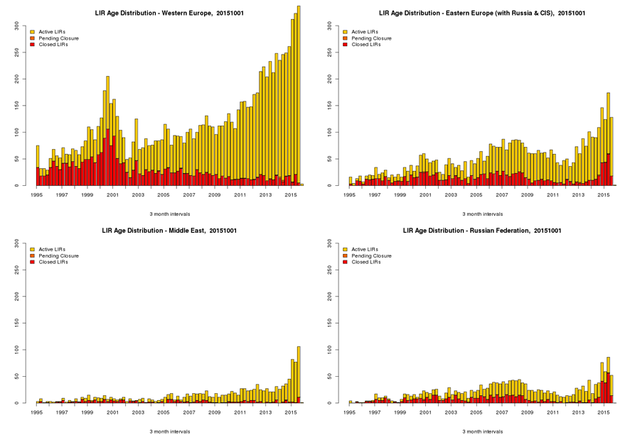
Figure 2: Age distribution in sub-regions
The age distribution for the Russian Federation (bottom right in Figure 2) shows this country accounted for most of the LIRs that closed in the first two quarters of 2015. From the 145 LIRs that signed up between 1 January and 1 July 2015, 65% had already closed on 1 October 2015. Almost all of these closed LIRs had been opened by just three distinct organisations. In all cases, the LIRs had requested a /22 they were entitled to from the last /8 and moved the allocation to another LIR by way of transfer or merger before the new LIR was closed.
For the third quarter of 2015, the ratio of active/closed LIRs in Russia is m ore in line with the general trend . Although the total number of new LIRs is lower than in either of the two preceding quarters, the third quarter sees only about 25% closed by 1 October. This development is likely caused by the policy change that discourages organisations from opening extra LIRs to obtain more IPv4 allocations from the last /8. The policy proposal, referred to as 2015-01 , does not allow transfer of IPv4 address space received from the RIPE NCC within 24 months of receiving the allocation. It was accepted by the community on 23 July 2015 and took effect immediately. After this date, we see fewer cases of additional LIR accounts being opened by organisations that already operated one or more LIRs.
Top ten members per country
The different growth rates in the sub-regions in recent years has also lead to a shift in positions in the top 10 of members per country. On 1 October 2012, Russia contributed the most LIRs, 12.4% of all the active members (see Figure 3a). Three years later, they have fallen to third place with a score of 9.9%. Number one is now the United Kingdom, with 11.8%, as you can see in Figure 3b.
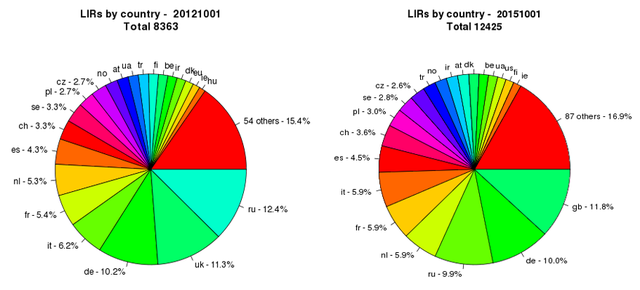
Figure 3a and 3b: LIRs by country on 1 October 2012 and on 1 October 2015
The reasons for the different growth rates in the United Kingdom and Russian Federation are not clear. One can speculate it is related to general economy, to different business models or to different ways to cope with exhaustion of IPv4 addresses. But it is not IPv6-related. Measurements by APNIC Labs show both the Russian Federation and United Kingdom had less than 1% IPv6-capable hosts for most of the past three years. Adoption numbers only went up in the most recent months and the United Kingdom grew faster there than the Russian Federation.
IPv6 Allocations
When in September 2012 the RIPE NCC reached the last /8 of IPv4 addresses, the policy for obtaining one final /22 IPv4 allocation required LIRs to have an IPv6 allocation, either from the the RIPE NCC or from an upstream LIR. The idea was that by making it mandatory, LIRs were both made aware of IPv6 and encouraged to take steps towards deployment. As can be seen in Figure 4, this requirement caused a sharp rise in the numbers of LIRs holding IPv6 addresses. At the same time, the number of LIRs without IPv6 allocations started to go down consistently.
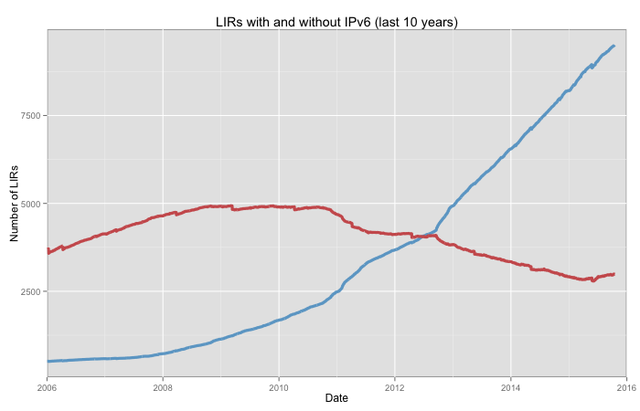
However, from Spring 2015 onward, the number of LIRs not holding IPv6 is going up again, slowly but surely. The reason for this change in trend is very likely policy proposal 2015-04 (accepted on 4 March, implemented on 19 March 2015), which removed the IPv6 requirement from the IPv4 policy for allocations from the last /8. Without this requirement, some of the new LIRs choose to not request IPv6 address space from the RIPE NCC.
The pattern becomes more clear when we look at the IPv6 RIPEness levels of the new LIRs. On 1 October 2015, we find 35% of the LIRs that joined in the six months after the policy was implemented do not have an IPv6 allocation or assignment; they score zero IPv6 RIPEness stars. One year earlier, on 1 October 2014, when the IPv6 requirement was still part of the policy, that number was significantly lower; only 15% of LIRs that signed up in the preceding six months did not have IPv6. Although the number of 35% will come down in the coming months when more of the new LIRs will have had their requests for address space processed, the difference of 20% at two equivalent moments in time is a clear sign that some of the LIRs are not (yet) interested in IPv6.
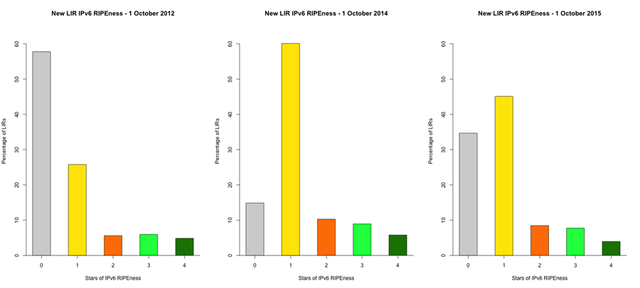
Figure 5a, 5b and 5c: Relative IPv6 RIPEness levels of new LIRs at different points in time
On the positive side, the new LIRs from 2015 are doing better when compared to a group of similarly-aged LIRs three years ago, when the policy with the IPv6 requirement had just been activated. As we can see in Figure 5a, 42% of the LIRs that joined after 19 March 2012 held IPv6 addresses and scored one or more stars of IPv6 RIPEness on 1 October 2012. In that respect, the 65% of new LIRs with one or more stars per 1 October 2015 is encouraging - an indication that more LIRs are aware of the need to adopt IPv6 and make at least the first step of requesting IPv6 addresses from the RIPE NCC.
Conclusion
2015 again sees strong growth in the number of LIRs. The rate of growth did slow down slightly in the third quarter. The accepted policy proposal to align transfer requirements for allocations from the RIPE NCC with allocations obtained via previous transfer likely plays a role here. We will have to see in the coming months if this reduced growth rate is temporary or marks the start of a real change in trend.
Following the removal of the IPv6 requirement for a /22 IPv4 allocation from the last /8, a larger percentage of new LIRs do not hold IPv6 address space. In the light of IPv6 adoption this could be seen as a slight disappointment. It is not unexpected as doubts already existed about whether forcing LIRs to request IPv6 address space really makes them use it. However, the positive side of the policy change is that, although no longer mandatory, about two thirds of new LIRs already have IPv6 addresses. This indicates the majority of new LIRs does recognise that the long-term future is with IPv6.

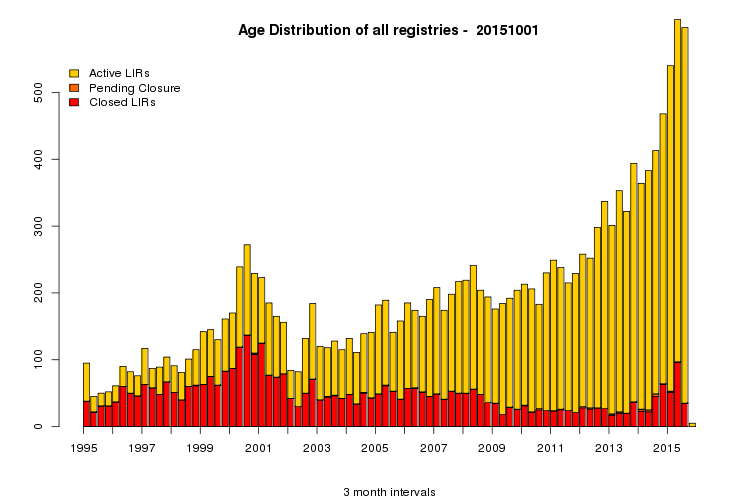

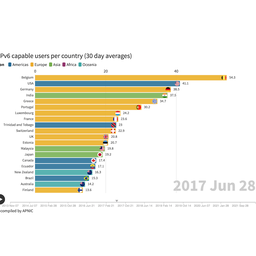
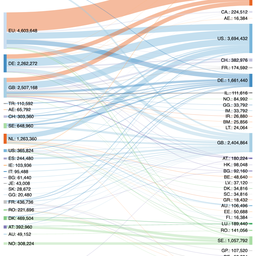
Comments 1
The comments section is closed for articles published more than a year ago. If you'd like to inform us of any issues, please contact us.
Martin Seebe •
It a great report - i personal like to see such development of Memebership